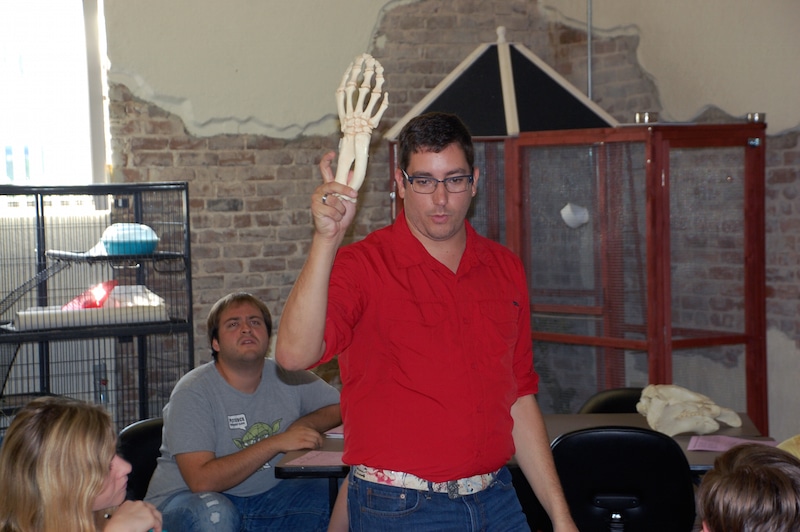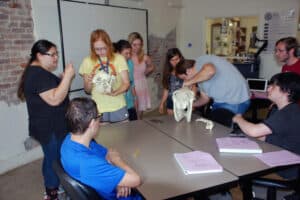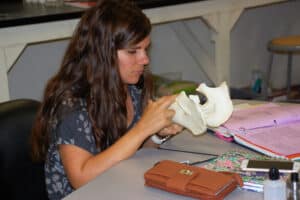
As a dozen students settled into their seats in Brian Ogle’s Community-sourced Science class, he strolled to the front of class to deliver instructions.
“On your [study] packet, I want you to write down the names of arm bones.”
Not surprisingly, students focused less on his words than the skeletal appendage he grasped while pacing the science lab.
It wasn’t Halloween. It was a lesson in comparative anatomy. Manatee versus horse. At this moment, the stage below belonged to the sea cow.
“What’s this used for,” Ogle asked, lifting the forelimb.
“Swimming,” students responded.
Ogle nodded. Maneuvering the paddle-like flipper into position, he posed another question.
“What side of the body is this from?”
“Right.”
And right, again.
For Ogle, it was concrete confirmation. The collection of animal models and manikins the science department purchased over the summer was a sound investment. An investment made possible only through the $9,882 grant for teaching models for the school’s general science and anthrozoology courses that the college received in July from the Charles B. McLin and Mary M. McLin Foundation.
“These models allow our students opportunities to conduct hands-on investigations,” said Ogle, an anthrozoology instructor at Beacon, the first college or university accredited to award bachelor’s degrees primarily to students who learn differently, and only the second undergraduate U.S. higher education institution to offer a major in anthrozoology.

This grant provided for a menagerie of manikins, skulls, animal-track replicas and complete skeletons from a rat, French bulldog skull, saluki, shark, Goliath frog, alligator, reticulated python, gray wolf, cheetah, pacu, African lion, mountain lion, giraffe, domestic cow, rabbit, black bear, coot, cougars, starfish, fish, and plant and animal cells.
Yet, on this Friday morning, the Florida manatee, the state marine mammal, and an endangered species with an estimated population of 6,000, is the star attraction.
Ogle weaved in and around four workgroups with limbs, skulls and jawbones of the gentle herbivore and larger animals for comparison, dropping science facts and testing students with stumpers.
“When we talk about comparative anatomy,” Ogle said, “we know manatees and horses share common ancestors.”
Students agree that the models help with comprehension and retention and gives them something cool to do, Ogle said.

Indeed, while students were examining the models up close and personal, Jessica Ball, a sophomore and human services major, while grasping a skull made her own connection.
“Poor Yorick!”